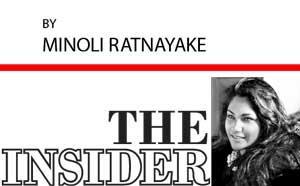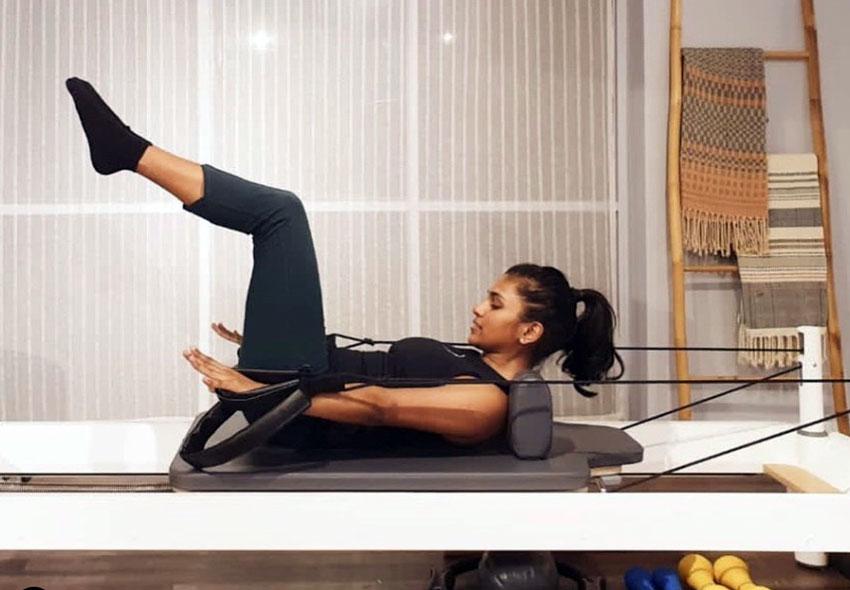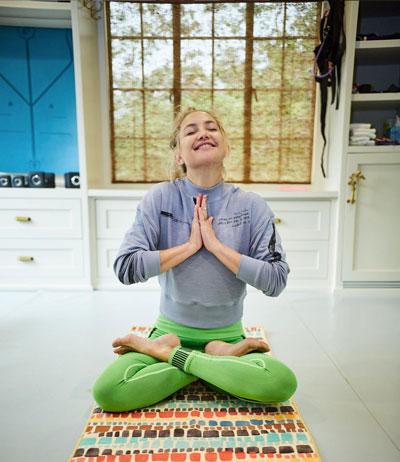27 Feb 2021 - {{hitsCtrl.values.hits}}

 For the uninitiated (myself included, I mean a couple of classes here or there doesn’t really count? Or does it?) they seem to be similar disciplines, my curiosity was further piqued when I recently ran into a friend I hadn’t seen since lockdown last year, while most of us are emerging reluctantly, rarely and not at our most attractive, she had blossomed into a lean, long-limbed, glowing-skinned nymph. She credited her look to a mix of both Pilates and yoga, with a three-day plant-based diet thrown in for good measure!
For the uninitiated (myself included, I mean a couple of classes here or there doesn’t really count? Or does it?) they seem to be similar disciplines, my curiosity was further piqued when I recently ran into a friend I hadn’t seen since lockdown last year, while most of us are emerging reluctantly, rarely and not at our most attractive, she had blossomed into a lean, long-limbed, glowing-skinned nymph. She credited her look to a mix of both Pilates and yoga, with a three-day plant-based diet thrown in for good measure!
“Stress relief; long, lean muscles; improved flexibility; a strong core - the health benefits of both disciplines are incredible. With both yoga and Pilates, focusing on breath work and a slow, controlled pace, it’s no wonder they’re seemingly similar, but “at their core, they are completely unrelated,” she said. “Really,” I asked somewhat disbelievingly. “Oh absolutely,” she replied, tying her hair into a ponytail, so her incredible skin was more in focus.
“One is a holistic discipline, originating from ancient India, the other a specific physical system devised by a German anatomist in the early 20th century, but there’s much cross-over, and therein lies confusion, between them.” With the waves of envy, a bit of ‘I have no idea what you’re talking about,’ coming off me, and a greasy Chinese roll visibly peeking out of my handbag, I hastily said my goodbyes and immediately googled yoga and Pilates, and started doing my research.

What is Yoga?
Yoga is a holistic practice originating in ancient India with the purpose of uniting the body, mind and spirit using yoga poses, called asanas, linked with the breath. “It’s a lifelong practice that also occurs off the mat. Moral disciplines and personal observations help to bring about more peace in our everyday lives.”


What is Pilates?
Pilates focuses on muscle toning and body control, with an emphasis on your core and alignment. “Joseph Pilates, a German anatomist, created this system of exercise in the early 20th century to strengthen, stretch and create balance in the body. The biggest difference between the two is that Pilates uses specially designed apparatus to challenge the body and provide support when needed.” The reformer machine, which is fitted with straps, springs and a sliding carriage, is perhaps the most well-known. - Vogue
After researching Vogue (aka the oracle) and sighing over all the beautiful things that I can’t buy, I moved my search to Instagram to see how many celebs preferred Pilates to Yoga or actually did both. Looking at Kate Hudson, Rosie Huntington-Whitely, Kourtney Kardashian and Lena Perminova, who all swear by both practices, although Pilates seemed to be a clear favorite, I was depressed and ordered more Chinese rolls.
The bottom line is both Yoga and Pilates target muscles that you don’t normally work in other forms of exercise, even a veteran gym bunny, will feel the burn after a Pilates or Yoga class. My first foray into Pilates was with a dear friend in London, we had a private session and it was fabulous, but I couldn’t walk for a week afterwards!!! Instead of gliding in to those snooty designer stores with the self-assured confidence that makes Sales Assistants bend over backwards, I hobbled in and was completely ignored!
As with any exercise, the more you practice the faster you’ll reach your goals. How you work-out is just as important, though: Pilates banks on very specific, targeted exercises, using the correct posture to get impressive results.
Being a holistic system, Yoga is as concerned with the mind and spirit as it is with the body. Taking the time to connect with the body, breath and mind, is the beauty of Yoga while being a physical practice, it also includes a meditation practice. It allows you to slow down and focus inwards. The focus and concentration needed to hold many of Yoga’s basic poses keeps you connected to the moment, as does the discipline’s emphasis on meditation.
Alignment is so critical to Pilates that nothing beats a one-on-one session with an experienced instructor and a great set of eyes to help guide you through the movements, which thankfully Barressential offer. They have mat and reformer classes, and you can also do online sessions if that works better for you. Their new client offers cushion the blow of actually leaving your couch, and I’m signing up next week!

Ashtanga, Aerial, Mat or Reformer: which one’s for you?
Yoga has many different practices and types. Most are based on the same traditional Yoga poses and range from calming to physically demanding. If de-stressing and winding down are what you’re looking for, a restorative practice is great. If you’re looking to sweat and have more of a workout try Ashtanga or an Aerial Yoga class, both of which are offered at the Prana Lounge, as are private sessions. Or treat yourself and take off to a gorgeous Yoga retreat like Sri Yoga Shala on the Southern coast.
There are fewer variations of Pilates; Reformer-only classes are often more dynamic than the classical Pilates which marries mat work with some apparatus, and is generally slower in pace. Essentially, it comes down to personal preference, so consider your fitness level, where it fits into your exercise routine and what you want to get out of the class. Or, why not try both! I think I’m going to, and sadly will have to ditch those Chinese rolls while I’m at it!
09 Jan 2025 26 minute ago
09 Jan 2025 1 hours ago
09 Jan 2025 1 hours ago
09 Jan 2025 2 hours ago
09 Jan 2025 2 hours ago